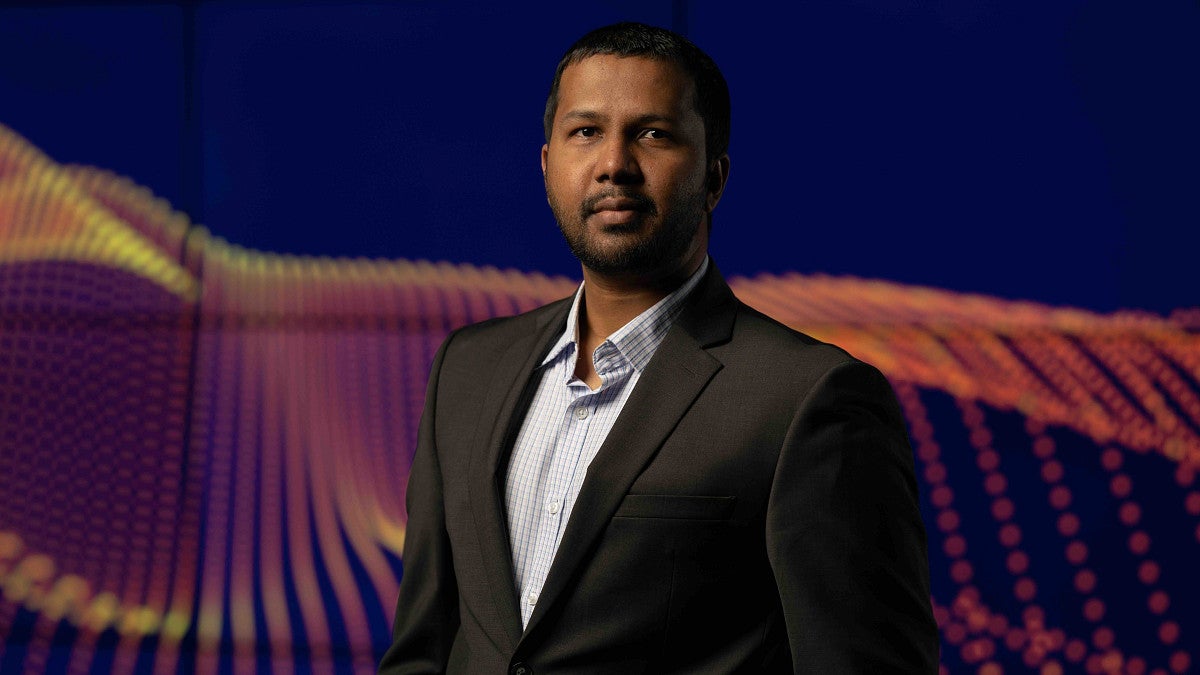
When Ramakrishnan (Ram) Durairajan decided it was time to take on the beast that is the Internet, he came prepared.
“My goal is to build a better internet, one that is more secure, more performant, and more resilient,” says Durairajan, who recently received tenure. Durairajan is an associate professor and a Ripple Fellow in the Department of Computer Science within the University of Oregon’s newly formed School of Computer and Data Sciences. His strategy to meet this challenge is not only groundbreaking but also a promising path toward something the world is more than ready to welcome, a higher-functioning Internet.
Better defenses for greater security
The type of attacks (e.g., Distributed Denial of Service) being made on critical network infrastructures are more sophisticated now than ever before. Not only are they persistent, but they are also constantly adapting. Durairajan’s team is developing a new, more agile defense framework that can be programmed to control network infrastructure and forward behavior. The endgame here is to deliver an exceptionally reliable level of protection from cyberattacks.
Higher functioning data capabilities
Durairajan’s team is also designing a management capability that will give enterprises the ability to navigate costs and operational goals of their cloud deployments. Along with higher functioning data capabilities, Durairajan and his team are researching ways AI/ML-driven decision-support systems, can be used by organizations to analyze substantial amounts of data to identify the best possible options for planning, forecasting, budgeting, and making other critical decisions.
Increased resilience to offset an outage or attack
Critical now is the development of a more robust cyberinfrastructure, one that can mitigate risks and outages caused by anything, large or small, from a full-fledged cyber-attack to basic network maintenance. Ram and his students are working on a hazard-proofing system to safeguard the Internet against a wide variety of natural disasters. A cyberinfrastructure that can prevail in the face of a catastrophic natural disaster—earthquakes, hurricanes, floods, tsunamis, wildfires—will be the ultimate test of resilience.
A team sharing strengths to meet the challenge
Durairajan is not working alone. He has a highly motivated team of undergraduate, graduate, and PhD students who bring a full complement of skill sets and perspectives to the program. "One of the highlights of my job is the team of students I work with. Each one of my mentees is exceptionally talented. I learn a lot daily from each of them."
When asked about the team’s work and how they could potentially improve the overall functionality of our cyberinfrastructure, one answer lies somewhere in the network’s physical topology—the structural arrangement of nodes and links in a network.
With a well-designed network topology, an organization can more easily locate faults and fix issues which improves its data transfer efficiency. Durairajan emphasizes the importance of collecting relevant data to effectively pinpoint and understand network problems. “The data gathered for network measurement studies provide valuable insights for developing solutions. The underlying principle guiding our group is the avoidance of assumptions during problem diagnosis, as the truth lies within the data.”
Giving enterprises greater control
Most enterprises rely on multi-cloud networks with two or more cloud computing or storage services being used to aid a single network. Each cloud service has its own sets of operational practices, privacy policies, and costs and each one can present a barrier. “Enterprises have minimal to no control over providers' infrastructures. This is a big problem for enterprises seeking to build multi-cloud strategies.” The measurement tools and techniques Durairajan and team are designing will give them more visibility into their own networks to detect weakness.
Ramakrishnan Durairajan has credentials equal to the task. He is a recipient of the National Science Foundation’s Faculty Early Career Development Award, and has been recognized with a Ripple faculty fellowship, UO faculty research award, best paper awards from ACM CoNEXT and ACM SIGCOMM GAIA. He also co-directs the Oregon Networking Research Group (ONRG).
